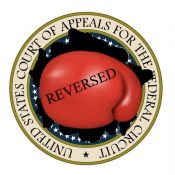How to write a patent application. It can’t be that difficult, right? Unfortunately, writing a patent application is not as easy as many think.

Image Source: Deposit Photos.
One of the most basic things any new patent attorney or patent agent needs to learn is how to draft a patent application. This skill is also one that can be extremely useful for inventors, particularly serious inventors who are likely to have more than one invention, as well as professional, corporate inventors who work for companies that pay them to invent. While the latter category (i.e., inventors) may approach the task of writing a patent application for the purpose of creating a solid first draft to file as a provisional patent application, or to pass forward to a patent practitioner, thereby cutting costs, the goals are the same: Write a quality patent application that usefully describes the invention.
Writing a patent application is not as easy as many think. Indeed, the concept of usefully describing the invention, which on its face seems easy enough to understand, is not as straight forward as it might seem, and why you cannot simply file an abbreviate description of an invention and think that suffices to protect anything really.
When a patent application is filed a filing date is awarded, and priority is established with respect to whatever is appropriately described in the patent application at the time of filing. “Appropriately described” is defined in the United States by 35 U.S.C. 112(a), which requires the patent application to description that thoroughly explains the metes and bounds of the invention, inventions that it can be practiced by those of skills in the relevant technological art or scientific field without undue experimentation, and which also discloses any preferences the inventor has with respect to the invention. For more see: Variations and Tricks & Tips to Describe an Invention in a Patent Application.
What follows are the most common parts of a patent application, together with discussion about what each section needs to include.
-
Title of the Invention
The title of the invention should be placed at the top of the first page of the specification, and it should be brief but technically accurate and descriptive. It should also contain fewer than 500 characters. The words “new,” “improved,” and “improvement,” are not considered appropriate for a patent title and should not be included at the beginning of the title of the invention and will be deleted by the USPTO. Similarly, the articles “a,” “an,” and “the” should not be included as the first words of the title of the invention and will be deleted.
-
Cross-reference to related applications
For applications filed on or after September 16, 2012, the specific reference any prior applications one is claiming priority to must be included in an application data sheet (Rule 1.76). For applications filed prior to September 16, 2012, the specific reference to the prior application may be in either an application data sheet (Rule 1.76(a)) or in the first sentences of the specification of a newly filed patent application following the title. Despite the fact that applications filed today no longer technically can claim priority by having cross-references in the patent application itself, this remains on the list of preferred parts of an application in the Manual of Patent Examining Procedures, and perhaps because it is how it has always been done many patent practitioners continue to do it this way still today.
-
Statement regarding federally sponsored R&D
If there is a governmental interest in the invention, a statement as to rights to inventions made under federally sponsored research and development is ordinarily included in the patent application. The statement generally includes the name of the government agency and the contract number, if the invention was developed by or while under contract with an agency of the U.S. government.
-
Background of the invention
The USPTO recommends that the Background of the Invention be broken down to include: (1) Field of the Invention, which is a statement that generally describes the field to which the claimed invention pertains, and which can include paraphrasing of the applicable U.S. patent classification definitions; and (2) Description of the Related Art, which the USPTO would like to be a discussion of the state of the prior art known to the applicant, including references to specific prior art.
There are many pitfalls associated with the Background of the Invention. In fact, the biggest one may be actually following the USPTO recommendation of identifying and discussing the state of the prior art and including specific examples. That is not something an experienced patent practitioner would do because once you admit something is prior art it become prior art, period. Furthermore, since the Supreme Court decided KSR v. Teleflexin 2007, it has become easier for patent examiners to reject claims as being obvious. While a long topic for another day, this has caused Backgrounds to become extremely short. Only in the rare case where there is some completely self-serving reason should the Background be anything other than short, sweet and vague. Those new to the practice and inventors do not have enough experience to know when they are dealing with those rare cases and should endeavor to keep the Background short, sweet and vague.
-
Summary of the invention
According to the USPTO: “The subject matter of the invention should be described in one or more clear, concise sentences or paragraphs.”
Frankly, I think this is a mistake. While there is no need to write a novel, or even a novella, endeavoring to keep the Summary of the Inventionbrief and concise is a missed opportunity. The Summary, if properly written to set out the nature, operation, and purpose of the invention, will provide great assistance to those seeking to understand of the invention and what the patent covers in the future. This is true because the Summaryis written in plain, easy to understand terms. The Summaryis intended to be straight forward, and not particularly written in legalese.
The Summary of Inventionshould be consistent with the claimed invention and should be more than a mere statement of the objects of the invention, although statements about the objectives of the invention are permissible.
-
Brief description of the drawings
While there is no particular need or requirement to keep the Summarybrief, there is no need to do anything in this section other than be brief. In the Brief Description of the Drawingsall you should do is identify what the drawing is as if you were placing a caption on the drawing (i.e., “Fig. 1 shows a top view of a…”).
-
Detailed description of the drawings
A Detailed Description of the Drawingsfollows Brief Description of the Drawings. This Detailed Description, required by Rule 1.71, must enable those skilled in the relevant art to make and use the invention without undue experimentation. An applicant is ordinarily permitted to use his or her own terminology, as long as it can be understood.
Reference characters used in the drawings are referred to in the text, so the reader can look at the drawings and read the text to understand what the writer is discussing, much as would be the case with a well written instruction manual on how to put something together requiring assembly. The description is a dictionary for the claims and should provide clear support for all terms used in the claims, with every feature specified in the claims illustrated.
In everyday language, the quickest way to explain the concept of what one is trying to accomplish is by reference to the popular children’s song “Skeleton Bones”, which explains how all the bones in the body are connected. For more explanation please see Requirement and Working with Patent Drawings to Create a Complete Disclosure.
-
Claims
35 U.S.C. 112 requires that the applicant shall particularly point out and distinctly claim the subject matter which he or she regards as his or her invention. Unfortunately, there is not much useful one can say about claim drafting in a few paragraphs. We have several tutorial articles here: Patent Claim Drafting. We will also host a live, online patent claim drafting course for beginners beginning October 1, 2018. For more on that see: Patent Claim Drafting for Beginners with Gene Quinn and John White.
-
Abstract
Each application must include an Abstract of the Disclosure, Rule 1.72(b). The content of an Abstract should allow the reader to quickly determine from a cursory inspection the nature and gist of the technical disclosure and what is new. The abstract should not refer to purported merits or speculative applications of the invention and should not compare the invention with the prior art.
Where applicable, the abstract should include the following: (1) if a machine or apparatus, its organization and operation; (2) if an article, its method of making; (3) if a chemical compound, its identity and use; (4) if a mixture, its ingredients; (5) if a process, the steps. Extensive mechanical and design details are unnecessary.
Conclusion
PLI has a treatise titled How to Write a Patent Application, which is excellent. It is written for attorneys and patent agents but is easily approachable for those new to the field.
I also have a system that I call The Invent + Patent System™, which is intended to help inventors create their own provisional patent applications. It is also an excellent tool for learning how to write a patent application. Those who enroll in Newbies get 6 months access to The Invent + Patent System™.
For more information on patent drafting please see these other articles:
- Can You Refile a Provisional Patent Application?
- Ten Common Patent Claim Drafting Mistakes to Avoid
- It’s All in the Hardware: Overcoming 101 Rejections in Computer Networking Technology Classes
- Two Key Steps to Overcome Rejections Received on PCT Drawings
- Drafting Lessons from a 101 Loss in the Eastern District of Texas
- From Agent to Examiner and Back Again: Practical Lessons Learned from Inside the USPTO
- Understand Your Utility Patent Application Drawings
- Getting a Patent: The Devastating Consequences of Not Naming All Inventors
- Getting A Patent: Who Should be Named as An Inventor?
- Make Your Disclosures Meaningful: A Plea for Clarity in Patent Drafting
- Avoid the Patent Pit of Despair: Drafting Claims Away from TC 3600
- A Tale of Two Electric Vehicle Charging Stations: Drafting Lessons for the New Eligibility Reality
- Background Pitfalls When Drafting a Patent Application
- Eight Tips to Get Your Patent Approved at the EPO
- What to Know About Drafting Patent Claims
- Beyond the Slice and Dice: Turning Your Idea into an Invention
- Examining the Unforeseen Effects of the USPTO’s New Section 112 Guidelines
- Anatomy of a Valuable Patent: Building on the Structural Uniqueness of an Invention
- Software Patent Drafting Lessons from the Key Lighthouse Cases
- Patent Drafting Basics: Instruction Manual Detail is What You Seek
- How to Write a Patent Application
- Admissions as Prior Art in a Patent: What they are and why you need to avoid them
- Patent Drafting: The most valuable patent focuses on structural uniqueness of an invention
- Patent Drafting: Proving You’re in Possession of the Invention
- Patent Drafting: Understanding the Enablement Requirement
- Patent Drafting 101: Say What You Mean in a Patent Application
- Patent Drafting 101: Going a Mile Wide and Deep with Variations in a Patent Application
- Learning from common patent application mistakes by inventors
- Defining Computer Related Inventions in a post-Alice World
- Patent Application Drafting: Using the Specification for more than the ordinary plain meaning
- Patent Strategy: Advanced Patent Claim Drafting for Inventors
- Patent Drafting 101: The Basics of Describing Your Invention in a Patent Application
- Patent Drafting for Beginners: The anatomy of a patent claim
- Patent Drafting for Beginners: A prelude to patent claim drafting
- The Inventors’ Dilemma: Drafting your own patent application when you lack funds
- Patent Drafting: Describing What is Unique Without Puffing
- 5 things inventors and startups need to know about patents
- Drafting Patent Applications: Writing Method Claims
- An Introduction to Patent Claims
- Patent Drafting: Define terms when drafting patent applications, be your own lexicographer
- Patent Language Difficulties: Open Mouth, Insert Foot
- Patent Drafting: The Use of Relative Terminology Can Be Dangerous
- Patent Drafting: Distinctly identifying the invention in exact terms
- Patent Drafting: Understanding the Specification of the Invention
- Tricks & Tips to Describe an Invention in a Patent Application
- Invention to Patent 101 – Everything You Need to Know to Get Started
- Patent Drafting 101: Beware Background Pitfalls When Drafting a Patent Application
- Describing an Invention in a Patent Application
- The Key to Drafting an Excellent Patent – Alternatives
- The Cost of Obtaining a Patent in the US

![[IPWatchdog Logo]](https://ipwatchdog.com/wp-content/themes/IPWatchdog%20-%202023/assets/images/temp/logo-small@2x.png)

![[[Advertisement]]](https://ipwatchdog.com/wp-content/uploads/2018/08/Ad-1-The-Invent-Patent-System™-1.png)
![[[Advertisement]]](https://ipwatchdog.com/wp-content/uploads/2018/10/enhance-420x300-3D.jpeg)
![[Advertisement]](https://ipwatchdog.com/wp-content/uploads/2024/05/Quartz-IP-May-9-2024-sidebar-700x500-1.jpg)
![[Advertisement]](https://ipwatchdog.com/wp-content/uploads/2024/04/Patent-Litigation-Masters-2024-sidebar-last-chance-700x500-1.jpg)
![[Advertisement]](https://ipwatchdog.com/wp-content/uploads/2024/05/Patent-Portfolio-Management-2024-sidebar-super-early-bird-with-button-700x500-1.jpg)

![[Advertisement]](https://ipwatchdog.com/wp-content/uploads/2021/12/WEBINAR-336-x-280-px.png)
![[Advertisement]](https://ipwatchdog.com/wp-content/uploads/2021/12/2021-Patent-Practice-on-Demand-recorded-Feb-2021-336-x-280.jpg)
![[Advertisement]](https://ipwatchdog.com/wp-content/uploads/2021/12/Ad-4-The-Invent-Patent-System™.png)







Join the Discussion
One comment so far.
Travis
August 12, 2018 11:05 amFor a the DIY/non-attorney/agent readers, I would like to mention a book that I have found containing critical knowledge. The book is the second edition of “Invention Analysis and Claiming, A Patent Lawyer’s Guide” by Ronald D. Slusky.
Among many other things, it showed me that what I thought was my invention was actually just an embodiment. What an eye opening revelation this was to me. This book has so many good points to remember, I could barely get through a paragraph without stopping to add to my notes/check list.
The knowledge gained will also help one be of better service to the patent attorney/agent.